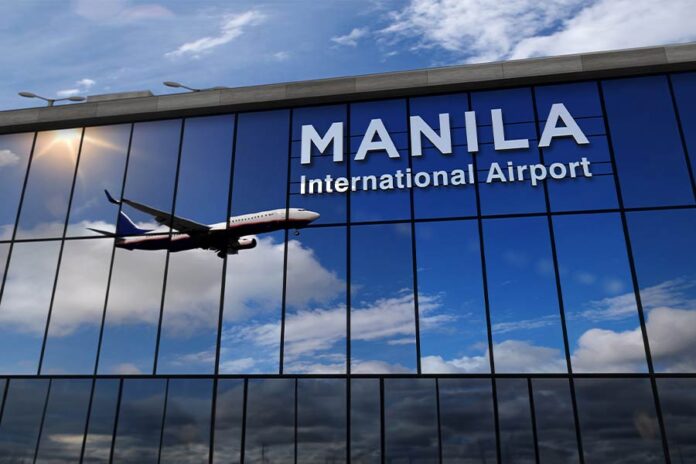Law firms with international and local experience are supporting the Asian Development Bank (ADB) behind the scenes as bidding has begun for a plum prize in the region ‒ a public-private partnership (PPP) for redeveloping Manila’s Ninoy Aquino International Airport (NAIA).
The Philippines is casting around the world for a private partner to modernise the overworked airport in a PHP170.6 billion (USD3 billion) makeover.

A competitive bidding process is open until the end of the year. Behind the scenes, law firms PJS Law and Pinsent Masons MPillay have the plum role of supporting the ADB as it advises the Philippines Department of Transportation on this massive undertaking.
“It is undeniably the key project of the [present] administration because it is the gateway to the country and currently serving all international and domestic flights,” PJS Law CEO Regina Jacinto-Barrientos told Asia Business Law Journal.
It’s to be a public-private partnership (PPP) managed by the transport department and the Manila International Airport Authority. Interested parties have been invited to qualify and bid through a rehabilitate-operate-expand-transfer agreement, in accordance with the country’s Build-Operate-Transfer Law and its 2022 Revised Implementing Rules and Regulations.
In the lead-up, the bank conducted a competitive selection process for the project’s legal advisory work with PJS and Pinsent Masons chosen for this role. Other advisers assisting ADB include PwC (financial), and Landrum and Brown (technical).
“PJS’ role is to co-ordinate with Pinsent Masons as well as the technical and financial advisers in providing advice to ADB on transaction structuring, due diligence, as well as the tender process and discussions with potential bidders,” Jacinto-Barrientos said.
“With the support of Pinsent Masons and the other advisers, we assumed primary responsibility for developing the draft concession agreement. In turn, we likewise provided support to the financial and technical advisers in developing the relevant components of the project.”
At a business level, Jacinto-Barrientos said the project was a growth opportunity for her law firm.
“This project builds on our existing experience that will better service clients locally and abroad as we continue growing our infrastructure practice and legal development,” she said.
She described the arrangement with Pinsent Masons as providing “a combined local and global legal and industry approach to the project” – an important optic, given the project’s lengthy history.
“The [concept has been] covered by four solicited proposals across different presidential administrations,” she said. The present progress “is testimony to this administration’s commitment to choose [a] bidding approach to attract the best for the country in delivering service on a level playing field that will commit the concessionaire to comply with key performance indicators and redound to users availing of technology, service and capacity augmentation under global terms and standards”.
Pinsent Masons partner James Harris said the project was one of the largest brownfield PPP projects to launch globally this year. “This project is vital to the economic development of the Philippines,” he said.
The government wants a “concessionaire” to operate and maintain the airport for 15 years through a PPP that covers all facilities including runways and the four terminals.
“With the right private sector partner, we can unlock [the airport’s] full potential, making it an example of progress and innovation in the heart of the Philippines,” said Philippine Transportation Secretary Jaime Bautista.
The project expected an increase in annual passenger capacity from 35 million to at least 62 million. The bidding process opened in August and submissions are due by December. At this stage, the winner is to be announced early in 2024.
ADB vice president Ahmed M Saeed said in February the Manila airport expansion was needed to ensure capacity stayed ahead of projected growth. “As the country’s main gateway, the NAIA’s strategic importance to the Philippines compounds the urgency to enhance its capacity, improve passenger experience, ensure safety and security, and optimise operations,” he said.
“The modernisation and expansion of regional airports will improve connectivity and drive development in the regional centres.”
The ADB is also advising on a connected transport project, the 33km underground Metro Manila Subway that will traverse metro Manila from Quezon City to the airport terminals. The Ninoy Aquino International Airport refurbishment fits hand-in-glove with the PHP735 billion New Manila Airport that is being built 40km to the north to eventually handle 100 million passengers annually.
Manila recorded 22,221,933 international and domestic air passengers from January to June 2023, an increase of 78% over H1 2022 and only 8% lower than the pre-pandemic level in 2019. There were 135,883 flight movements, up by 42% on H1 2022 and equivalent to 100% of the flights handled at the airport in the first half of 2019.
“The double-digit surge in our flight movements and passenger volume is enough grounds for optimism that the aviation industry is steadily heading towards full recovery,” said Manila International Airport Authority officer-in-charge Bryan Co.



























